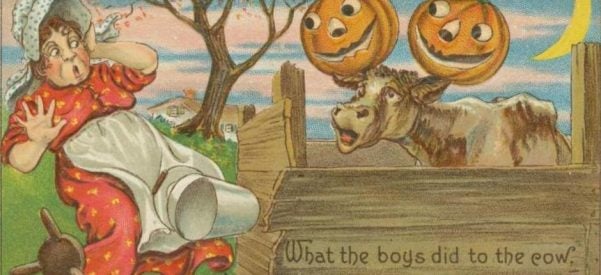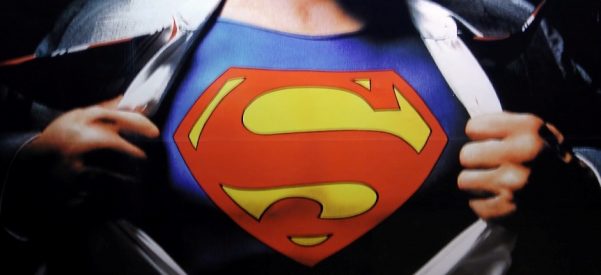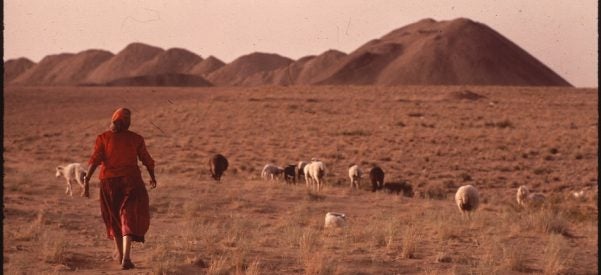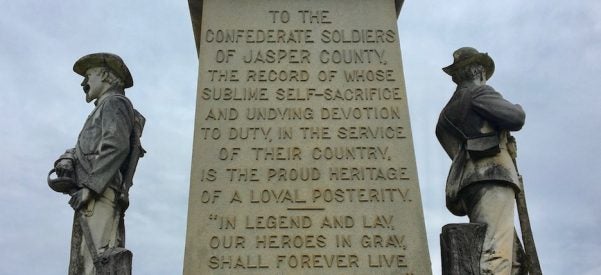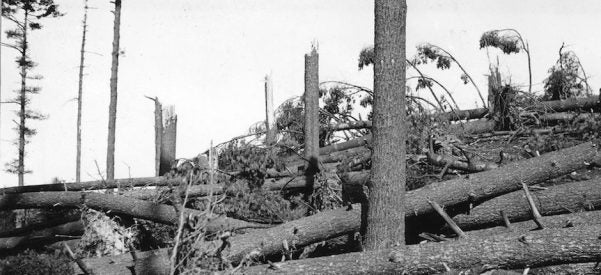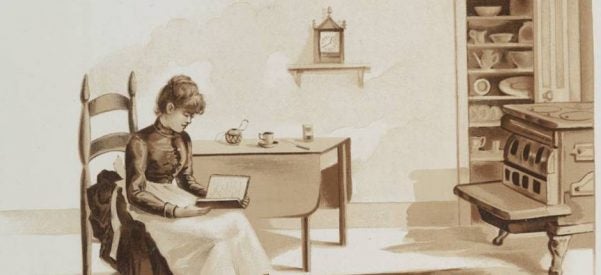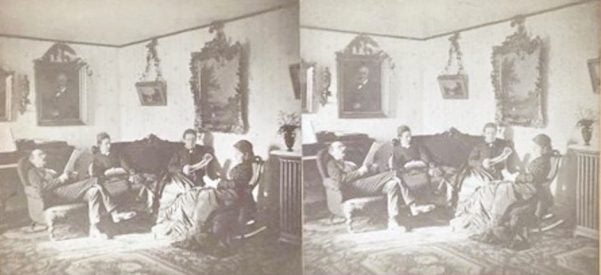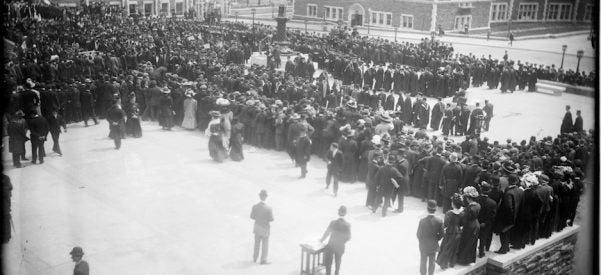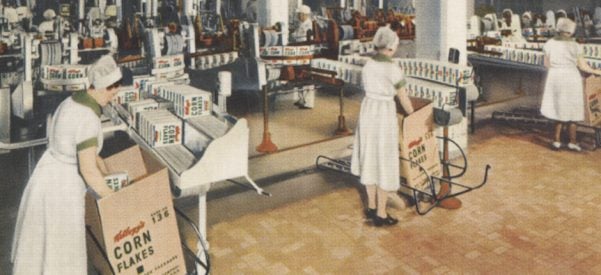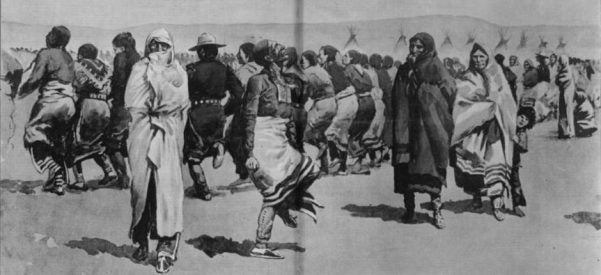Explore
: American History
Nineteenth-Century Urbanization Unleashed the Nation's Anarchic Spirits
By Lesley Bannatyne
October 26, 2017
Imagine. Pre-electricity, no moon. It’s late October, and the people whisper: This is the season for witchery, the night the spirits of the dead rise from their graves and hover behind the hedges.
The wind kicks up, and branches click like skeletal finger bones. You make it home, run inside, wedge a chair against the door, and strain to listen. There’s a sharp rap at the window and when you turn, terrified, it’s there leering at you—a glowing, disembodied head …
Read More >
Rarely an Agent of the Government, Superman Defended the 'American Way' Through Simple Decency and Acts of Charity
By Ian Gordon
October 23, 2017
I can’t really remember when I first encountered Superman. It might have been through the 1950s television series The Adventures of Superman, or it might have been in a Superman comic book—not an American comic book, but a black and white reprint, by the Australian publisher K. G. Murray.
Growing up in Australia, I learned the basic stories of American history from the pages of these Superman comics. I read about the Boston Tea Party; Nathan Hale’s patriotism; Washington crossing …
Read More >
Each Year, an Idaho Festival Honors the Shepherds Who Sought to Keep the Peace
By Adam M. Sowards
October 5, 2017
In early October, when the leaves turn golden and the shadows of the Sawtooth Mountains lengthen, the annual Trailing of the Sheep Festival moves through south central Idaho. The festival, complete with a sheep parade, sheepdog trials, and a wool fest, celebrates the long relationship between sheep and their human companions.
Sun Valley, Idaho, is synonymous with New West wealth, but it sits in the Wood River Valley, where more humble ranchers and farmers have long made their living. In the …
Read More >
Confederate Monuments to Nameless Infantrymen Were Less About Celebrating History Than Reestablishing Social Order
By Gaines M. Foster
September 28, 2017
Monuments to Robert E. Lee and other Confederate leaders have long been controversial, but monuments to nameless Confederate soldiers, those lone stone figures in public places, are far more common and have long served as an iconic symbol of the South. Understanding the origins of these stone soldiers who still loom over present-day towns and cities may help us better understand current controversies over them.
The white South began to erect soldiers’ monuments soon after the Confederacy’s defeat. In the first …
Read More >
An Epic Natural Disaster Restored the Forest of an Earlier America
By Stephen Long
September 21, 2017
This morning, while driving in central Vermont, listening to the latest news about hurricanes in Florida and Texas, I caught up with my first leaf peeper of the season. Poking along at about 20 mph in his rental car, the tourist was peering at our hills of orange and crimson and gold leaves while simultaneously looking for a place to pull over to snap a photo.
Fall foliage and hurricane season go hand in hand in New England. But what …
Read More >
Scientific Methods and Rising Literacy Were Key Ingredients for a Culinary Revolution
By Helen Zoe Veit
September 18, 2017
The first edition of The Boston Cooking-School Cook Book—now known as The Fannie Farmer Cookbook—reads like a road map for 20th-century American cuisine. Published in 1896, it was filled with recipes for such familiar 19th-century dishes as potted pigeons, creamed vegetables, and mock turtle soup. But it added a forward-looking bent to older kitchen wisdom, casting ingredients such as cheese, chocolate, and ground beef—all bit players in 19th-century U.S. kitchens—in starring roles. It introduced cooks to recipes like hamburg steaks …
Read More >
From Log Cabins to Gilded Age Mansions, How You Lived Determined Whether You Belonged
By Richard White
September 11, 2017
Like viewers using an old-fashioned stereoscope, historians look at the past from two slightly different angles—then and now. The past is its own country, different from today. But we can only see that past world from our own present. And, as in a stereoscope, the two views merge.
I have been living in America’s second Gilded Age—our current era that began in the 1980s and took off in the 1990s—while writing about the first, which began in the 1870s and continued …
Read More >
Colleges Once Thought the Countryside Bred Character. Now They Use Cities for "Hands-On Learning"
By Steven J. Diner
August 31, 2017
Since the end of World War II, most American college students have attended schools in cities and metropolitan areas. Mirroring the rapid urbanization of the United States in the late 19th and early 20th centuries, this trend reflects the democratization of college access and the enormous growth in the numbers of commuter students who live at home while attending college.
Going to college in the city seems so normal now that it’s difficult to comprehend that it once represented a …
Read More >
Informed by Their Religious Faith, the Siblings Merged Spiritual with Physical Health
By Howard Markel
August 3, 2017
The popular singer and movie star Bing Crosby once crooned, “What’s more American than corn flakes?” Virtually every American is familiar with this iconic cereal, but few know the story of the two men from Battle Creek, Michigan who created those famously crispy, golden flakes of corn back in 1895, revolutionizing the way America eats breakfast: John Harvey Kellogg and his younger brother Will Keith Kellogg.
Fewer still know that among the ingredients in the Kelloggs’ secret recipe were the teachings …
Read More >
By Clamping Down on the Indian Ghost Dance, the U.S. Government Sparked a Tragedy
By Louis S. Warren
July 6, 2017
The Wounded Knee Massacre of 1890 appears in many history textbooks as the “end of the Indian Wars” and a signal moment in the closing of the Western frontier. The atrocity had many causes, but its immediate one was the U.S. government’s effort to ban a religion: the Ghost Dance, a new Indian faith that had swept Western reservations over the previous year.
The history of this episode—in which the U.S. Army opened fire on a mostly unarmed village of …
Read More >


